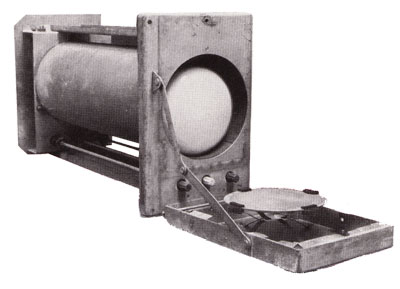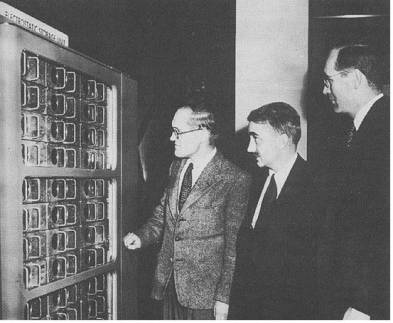
Via @slashdot.
Sixty-five Years Ago, Manchester’s ‘Baby’ Ran Electronically Stored Program. Posting at Slashdot.
“as the Manchester Small Scale Experimental Machine aka ‘Baby’ became the world’s first computer to run an electronically stored program on June 21, 1948. The ‘Baby’ was developed by Frederic C. Williams, Tom Kilburn and Geoff Tootill at the University of Manchester.
From The Williams Tube maintained by Brian Napper at the University of Manchester.
By March 1947 Tom Kilburn had discovered a different and better method of storing information, more suited to storing a large number of bits on the same tube. By November 1947 they had succeeded in storing 2048 bits for a period of hours, having investigated a number of variations on storing a set of bits (dot-dash, dash-dot, defocus-focus, focus-defocus).
The general principle behind the storage of binary information was to plant charge in one of two different ways at an array of spots on a CRT using standard techniques. The type of charge at any spot, representing a 0 or 1, could be sensed by a metal pick-up plate on the outside of the CRT screen, thus “reading” the “value” of the spot. However, the charge dissipated very quickly, so values were preserved indefinitely by continuously reading their value and resetting the charge as appropriate to the value.
…
When in Autumn 1947 the group had successfully stored 2048 digits, they had the problem of proving that the store would operate successfully inside a computer. They could only alter bits at the rate of around 1 a second, which was 100,000 times slower than the store’s capability. In the end they decided that the simplest way to test that the CRT storage system was suitable for use in computers was to build a small computer round it. So the way was clear for the construction of the SSEM, the “Baby”, “to subject the system to the most searching test possible.” The Baby was therefore built to show that Williams-Kilburn CRT Stores could work dynamically in a working computer, and to demonstrate the feasibility of building a much larger machine using them. That it also was the first machine to realise the stored-program computer, and prove its feasibility was a secondary consideration.

Image: Williams, Crawley and McPherson admiring the implementation of the Williams Tube in an IBM 701 in 1953 image from Early British Computers by Simon H. Lavington
Top Image: A Williams tube. CC 2.0.